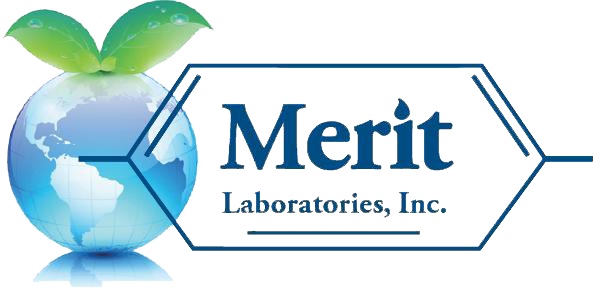The Differences between EPA 537, 537 Modified, and ASTM D7979
EPA 537: EPA 537 is a Drinking Water Method for 14 PFCs using Solid Phase Extraction and Liquid Chromatography/Tandem Mass Spectrometry (LC/MS/MS). As with most EPA drinking water methods, EPA 537 is prescriptive and the only allowable modifications are mentioned in the method. The U.S. EPA has made it abundantly clear that EPA 537 should not be used for any sample matrix other than drinking water. Additionally, the method is limited to the 14 PFC compounds listed in the method. The Michigan DEQ list of 24 PFC contains compounds that would require additional modification that are not permitted, even if the matrix was still drinking water. Merit performs EPA 537 in drinking water for the list of 14 compounds.
EPA 537 Modified (EPA 537M): First, it must be understood that 537M is not actually a method. Instead, 537M is a modification of the drinking water method (EPA 537) and all modifications and QC requirements are entirely determined by the laboratory making those modifications. These modifications are unknown and differ dramatically from laboratory-to-laboratory and are often used for all matrices: wastewater, groundwater, soil, food, etc. The Department of Defense (DoD) and Department of Energy (DoE) have begun to bring some order to 537M with the 2017 release of DoD/DOE QSM 5.1. At the time of this writing, the best way to assure your data has consistent QC requirements is to only use laboratories who have a DoD QSM 5.1 accreditation for 537M and require that all your data be delivered to that standard.
ASTM D7979 with Isotopic Dilution: ASTM D7979 with Isotopic Dilution is a method that has approved and published by ATSM D19 for non-drinking water samples. It is the first validated method for non-drinking water aqueous matrices for PFCs using Liquid Chromatography/Tandem Mass Spectrometry (LC/MS/MS). The results produced by ASTM Method D7979 have shown enough promise that the EPA is currently going through a multi-laboratory validation using methodologies that are similar. EPA Region 5 Laboratory completed development of ASTM 7979 and is currently being used to analyze samples byRegion 5. It is likely that the first SW 846 method will be substantially similar but this is just Merits labs guess. However, if 537M is needed, your lab could reference their ASTM D7979 method as 537M considering they are all laboratory specific methods (excluding QSM 5.1 data requirements). Merit Laboratories performs ASTM D7979 with Isotopic Dilution for the analysis of the complete list of the 24 PFCs requested in the MDEQ IPP PFAS program.
Correcting Misunderstood Statements about ASTM D7979
Misunderstanding: “ASTM D7979 method is a screening method”: The statement is false and has always been false. We have been told and asked this by multiple people. We are not sure where this information is coming from about ASTM D7979 being a screening method. In fact, to confirm that ASTM D7979 is not a screening method, we worked with Micheal Goergen who is on the ASTM D19 committee that approved this method. He confirmed that ASTM D7979 is meant to give definitive results and is not a screening method.
Misunderstanding: “The ASTM method cannot be used for Branch and Linear”: This statement is false. We have been running both branched and linear for all compounds for which standards exists. In fact, just recently when Wellington Laboratories released two additional branched PFC standards, Merit successfully began running them as well.
Misunderstanding: “The ASTM method is Crude and Simplistic”: This statement happens to be a matter of opinion. However, Merit Labs believes the statement is false. The main difference comes from the use of a solid phase extraction (SPE). The ASTM method is simpler to prep samples, however, that is where the simplicity ends. When running samples using SPE you gain two significant advantages:
- 250 times multiplier, which allows for lower detection limits
- Removal of many interferences
By using these two advantages, a laboratory can significantly shorten the run time, while the effect of multiplications allows for the use of less-sensitive instrumentation. However, there are other key advantages for using ASTM D7979 with Isotopic Dilution. One such advantage is there is much less chance of contamination or analyte loss. ASTM D7979 also provides impressively consistent results. It should be noted that in order to achieve low limits of detection, the laboratory must commit to using the latest state-of-art instrumentation and technology and employing much longer run rimes to separate out interferences. It is also worthwhile to mention that an experienced chemist should be evaluating the laboratory data prior to release.
Conclusion: Merit made the decision to use ASTM D7979 with Isotopic Dilution for all non-drinking water aqueous matrices based on our analytical evaluation and discussions we have had with the people on the ASTM D19 committee and MDEQ. We are also committed to developing any new method for PFCs once the EPA releases an SW-846 method.
Contact Merit Laboratories to learn more how about it can assist you on your next PFAS project.

